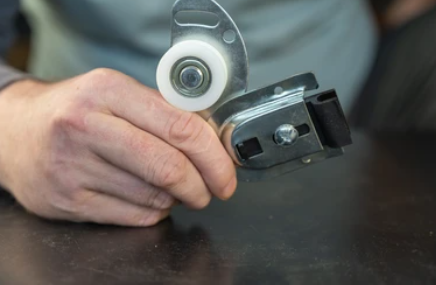
- April 15, 2024
- TDK Door Components Team
The Ultimate Guide to Choosing the Right Industrial Door Components
When it comes to industrial doors, choosing the right components is crucial for ensuring optimal performance, safety, and durability. Industrial doors are subjected to heavy use, harsh environments, and strict safety regulations, making the selection process a critical step. In this ultimate guide, we'll explore the essential components of industrial doors and provide valuable insights to help you make informed decisions.
1. Door Panels
Door panels are the most visible component of an industrial door system. They come in various materials, each with its own advantages and disadvantages. Common options include:
- Steel: Highly durable, fire-resistant, and low maintenance. Steel door panels are ideal for high-traffic areas and harsh environments.
-
Aluminum: Lightweight yet sturdy, aluminum door panels are corrosion-resistant and suitable for areas with moderate traffic.
- Insulated Panels: These panels provide excellent thermal insulation, making them suitable for temperature-controlled environments or areas with high energy costs.
When choosing door panels, consider factors such as the intended use, climate conditions, and insulation requirements.
2. Track Systems
The track system is responsible for guiding the door panels during operation. Common track system types include:
- Rolling Tracks: These tracks allow the door panels to roll horizontally or vertically, making them suitable for applications with limited overhead space.
- Lift Tracks: In high-lift situations, lift tracks raise the door panels vertically before moving them horizontally.
- Bi-Parting Tracks: Designed for large openings, bi-parting tracks allow the door panels to move in opposite directions, creating a clear opening in the center.
3. Operating Systems
The operating system determines how the industrial door opens and closes. Common options include:
- Manual Operation: Suitable for low-traffic areas or emergency exits, manual doors require human effort to open and close.
- Motor-Driven Systems: These systems use electric motors to automate the door operation, improving efficiency and convenience.
- Pneumatic Systems: Powered by compressed air, pneumatic systems are often used in hazardous environments or areas with strict safety regulations.
Choose an operating system that aligns with your operational requirements, safety standards, and budget.
4. Safety Features
Industrial doors are subject to strict safety regulations to protect workers and equipment. Essential safety features include:
- Safety Edges: These sensors detect obstructions and automatically reverse the door's motion, preventing potential injuries or damage.
- Photo-Eye Sensors: By creating an invisible light barrier, photo-eye sensors detect objects or individuals in the door's path and trigger the appropriate safety response.
- Audible and Visual Alarms: These alarms alert individuals near the door's operation, reducing the risk of accidents.
Prioritize safety by selecting doors with robust safety features that comply with industry standards and local regulations.
5. Accessories and Additional Components
Depending on your specific needs, you may require additional components or accessories, such as:
- Insulation: Insulated door panels or additional insulation materials can improve energy efficiency and temperature control.
- Vision Panels: Also known as vision lites, these transparent panels allow for visibility through the door, enhancing safety and convenience.
- Weather seals: These seals prevent air, moisture, and debris from entering the facility, improving energy efficiency and indoor environmental quality.
- Access Control Systems: Integrate access control systems, such as card readers or biometric scanners, to enhance security and monitor door operations.
By carefully considering all essential components and selecting the right combination, you can ensure that your industrial door system meets your operational requirements, safety standards, and long-term performance goals.
Remember, consulting with experienced professionals and adhering to industry best practices is crucial when choosing industrial door components. They can provide valuable guidance and recommendations tailored to your specific needs.